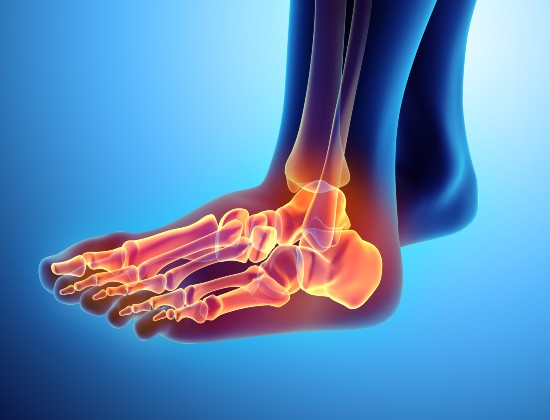Morton’s neuroma surgery
Morton’s neuroma surgery is carried out to treat Morton’s neuroma, where the nerve is squashed or trapped between the ends of the metatarsal bones in the foot, causing it to gradually enlarge.
What does it involve?
Usually a day case procedure, surgery is carried out under a general anaesthetic with an injection in the foot to numb it after surgery. The surgeon makes a tiny incision (cut) on the top of the foot between the toes over the painful neuroma. The neuroma is then carefully removed.
Recovery
Immediately after surgery:
- Your foot will be bandaged, numb and pain free
- You will be referred to a physiotherapist who will advise on a personalised rehabilitation programme and walking in a padded stiff shoe which will be supplied
- You will be sent home only when you are comfortable and given a follow-up appointment and painkillers if required
During the first few weeks:
- Elevate your foot (above the level of your heart) as much as possible to reduce swelling
- Move around only when you need to, for example to wash or use the toilet. Don’t put weight on the operated leg
- Some blood ooze can be expected in the bandage. If you are worried, contact the Fortius Clinic for advice
- Take painkillers as prescribed by your doctor
Follow-up appointments:
Everyone is different, so healing and post-operative programmes vary from person to person. However, the schedule of follow-up appointments below is typical:
- Two weeks - your bandages will be removed and the foot will be examined
- Six weeks - your shoe will be removed and the foot will be re-examined
- 12 weeks - final appointment and discharge
When can I start to walk ?
Your surgeon will be able to advise you about the type of footwear you should use and how quickly you will recover. Below is a guide to what may be advised:
- 0-6 weeks: you will be able to fully bear your weight in a hospital shoe
- After six weeks: you will be able to fully bear your weight in your own shoes
How do I wash and shower?
During the first two weeks it’s important to keep the bandaging/foot totally dry although you will be able to shower with a waterproof cover over the foot. After two weeks you can shower without the cover if the wound is healed, but gently dab it dry.
How should I look after the wound?
Once the bandage is removed, don’t pull at your scabs, let them fall away naturally. If your wound becomes red, swollen or sore you should contact the Fortius Clinic and arrange to see your consultant to check you don’t have an infection.
Physiotherapy and rehabilitation
Your physiotherapist will guide you through the stages of rehabilitation including toe mobilisation exercises, swelling reduction and reducing muscle tightness.
When can I start to drive again?
The DVLA states it’s the responsibility of the driver to ensure they are always in control of the vehicle. A good guide is if you can stamp down hard with the foot during an emergency stop and this will usually take at least four to six weeks. Although your specialist will advise you about when it’s safe to start driving again, it remains your responsibility to drive safely and you should also check with your vehicle insurer to confirm you are covered.
When can I return to work?
This depends on the type of work you do and how quickly you recover. As a general guide, if your job involves sitting down for most of the time, you should be able to return to work after two weeks; if it involves manual work, you may need to have up to six weeks off.
What long-term outcome can I expect after surgery?
- Excellent pain relief once the wound has healed, which can take two to four weeks
- A good level of activity and sports by three months
- It will take up to six months to be fully recovered
- This procedure has high patient satisfaction in up to 90% of cases. However, you may have mild swelling in your foot for up to a year
- You may experience some toe numbness because the nerve has been removed but this does not usually cause problems
What are the risks?
Below is a guide to the risks of this type of surgery. However, your surgeon will discuss these with you before your procedure, and answer any questions you may have:
Infection: The chance of infection is around 1% and can usually be treated with antibiotics. Serious problems caused by infection are very rare and can be treated
Recurrence of the neuroma: Unfortunately 10-30% of patients still experience symptoms. If this is the case then further treatment such as injections or further surgery (successful in 60-70% of cases) can be discussed
Toe stiffness: The toe can remain a little stiff but usually recovers over the course of rehabilitation and physiotherapy can help with this
Deep Vein Thrombosis (DVT): You may be given blood-thinning medication after the surgery if you are at a higher risk of DVT (where a blood clot forms in a deep vein in the leg). However, DVT is fairly unusual (less than 3% of cases) after this type of surgery
Important:This information is only a guideline to help you understand your treatment and what to expect. Everyone is different and your rehabilitation may be quicker or slower than other people’s. Please contact us for advice if you’re worried about any aspect of your health or recovery


